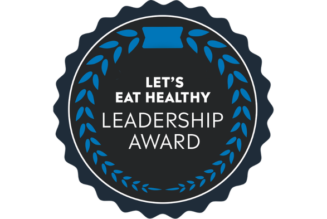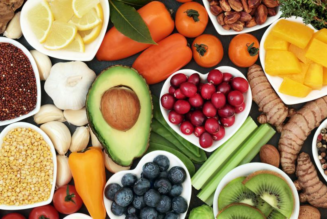
It can be a jungle out there when you’re trying to make healthy eating choices away from home.
You’ve got every good intention of getting something “healthy” before the hunger pangs make you wrap your arms around your old buddies: lotsa sugar, lotsa salt and food additives you can’t pronounce.
But where do you go in this area to get healthy food? What do you choose from the menu, once you’re there?
And even more essential, are you sure your concept of healthy eating is based on medically proven facts, rather than the three-week special diet supplement you bought after watching an online testimonial?
Healthy choices are often difficult ones because they take more thought, time and support, according to Deanna Shuler, Director of Marietta Memorial Health System’s Community Health and Wellness Department.
MMH has developed a “Live Memorial Well” community partner plan to nourish the physical, emotional and mental aspects of a healthy life. On the healthy eating landscape, Live Memorial Well involves a very new program they hope will catch the interest of area food vendors as well as individuals.
First, it involves a 100% plant-based program with very limited use of oil, salt and sugar. Plant-based does mean there are no animal products in the foods, but it doesn’t necessarily imply “vegan.” Theoretically, the term vegan could include potato chips or a cookie, Shuler, said. “No animal products” by itself doesn’t automatically encompass “healthy.”
“When I use the term ‘plant-based,’ I’m describing a lifestyle that is plant-predominant and, significantly, is from whole plants, ones that are minimally processed,” she said. “And I want to stress that this approach is evidence-based.”
Eating in this pattern can lead to improvements in blood pressure, sugar and cholesterol levels, for example.
It is true, though, that this is not meant to be a short-term change.
“It’s part of a culture that looks at food, movement and sleep as opportunities to make healthy choices throughout life that will have an impact,” she said. “Our purpose is to treat, reduce and prevent chronic disease. Science tells us this will work.”
A second key element of the new program at MMH is the involvement of local vendors.
“Could you be involved as a vendor if you think you just have one or two things that fit into the food program described? Yes! Go for it!” Shuler said.
The program will depend on vendors being able to accommodate the program without a lot of difficulty, Shuler said.
“This has to work for our vendors. Let’s highlight what you have, or what you could or would like to modify easily enough. No one is expecting that anyone can make their entire menu reflect this program.”
There is a LiveMemorialWell.com website, Shuler said, but the hospital is planning to make adjustments that will make content easier to find and to show its relationship to the many aspects of MMH that also involve healthy lifestyles. Community Health and Wellness, for example, is in close touch with the Lifestyle Medicine Department headed by Dr. David Drozek.
LiveMemorialWell.com is also the website where food vendors will be able to get added exposure to their offerings.
“We will support and promote the vendors and put them on our own pages when we establish program partnerships with them,” she said.
Shuler said she would welcome being directly contacted by any individual or vendor who wants to know more about the LiveMemorialWell healthy food program. Her email is DShuler@mhsystem.org and her phone number is 740-568-5380.
She has another suggestion for anyone who is wondering what the program can look like in the future. There are two vendors, The Changed Plate at the Belpre MMH site and Mother Earth Foods on 19th Street in Parkersburg, already in the program. The two food establishments were easy community partner choices to start with, Shuler said. The Changed Plate is a Marietta Memorial Hospital operation. Mother Earth Foods has been serving the area as a significant source of health foods and health food information for 48 years under the continuing direction of owner David Hawkins.
“Go to those two places for food,” she suggested. “You can see what items are marked as LiveMemorialWell choices and try those. Then, when you’re at other places, you may be able to look for something similar.”
As far as vendors are concerned, there may be formal agreements down the road to ensure that a food bearing the MMH checkmark is what it says it is. But for now, Shuler said, “We’re working on building partnerships together with the community.”
At The Changed Plate, there is a printed LiveMemorialWell rack card. It lists the restaurant’s food items that carry the LiveMemorialWell specially designed logo, a blue checkmark holding a green plant leaf. Currently, there are five menu items in that category, including Vindaloo and Baja grain bowls, fresh fruit, a fresh vegetable wrap and a Freekah breakfast bowl.
At the Mother Earth Foods website, there is a reproduction of a menu with a number of MMH checkmarks. Not all of those foods come out of the store’s special commercial kitchen every day, but it does represent all the Mother To Go foods Chef Kim Burnett has in her repertoire. The daily items are individually packaged and stocked in a special refrigerated section. .
To summarize her explanation of the program, Shuler said, remember these things:
¯ You can find healthy foods locally.
¯ The 100% plant-based whole foods program is evidence-based healthy. Don’t rely on the word “vegan” as the sole way you determine a food to be healthy.
¯ Make the healthy choice an easy choice to make.
¯ MMH would like to hear from you.
“You can call and ask questions. “Are there any more food vendors in the program now? Where are they?” Shuler suggested.
“Or, you can call and just say, “We like this. Please add more.”
Basic Recipe Guidelines for Live Memorial Well
¯ 100% plant-based: no added animal products, including dairy or egg
¯ Whole foods can be cooked, and don’t need to be served raw.
¯ 100% whole grains: brown rice instead of white rice; whole grain bread and pasta, etc.
¯ Foods can be minimally processed, such as tofu, whole grain pasta, whole grain bread.
¯ Minimize added salt, sugar, oil, or artificial sweeteners
¯ If salt is used, the final sodium concentration in mgs should be no more the total calories of the item.
¯ If oil is used, the final fat calories should be no more than 20% of the total calories.
¯ Oil should not be visible in droplets in the packaged product.
¯ If no added oils and fats are used, the item may contain more than 20% of the calories from fat if the fat comes from whole foods, such as nuts and avocado.
¯ Added sweeteners can be:
– Date paste/dried fruit/apple sauce/etc.
– Honey
– Maple syrup
– Minimize agave, stevia and plant alcohols.









